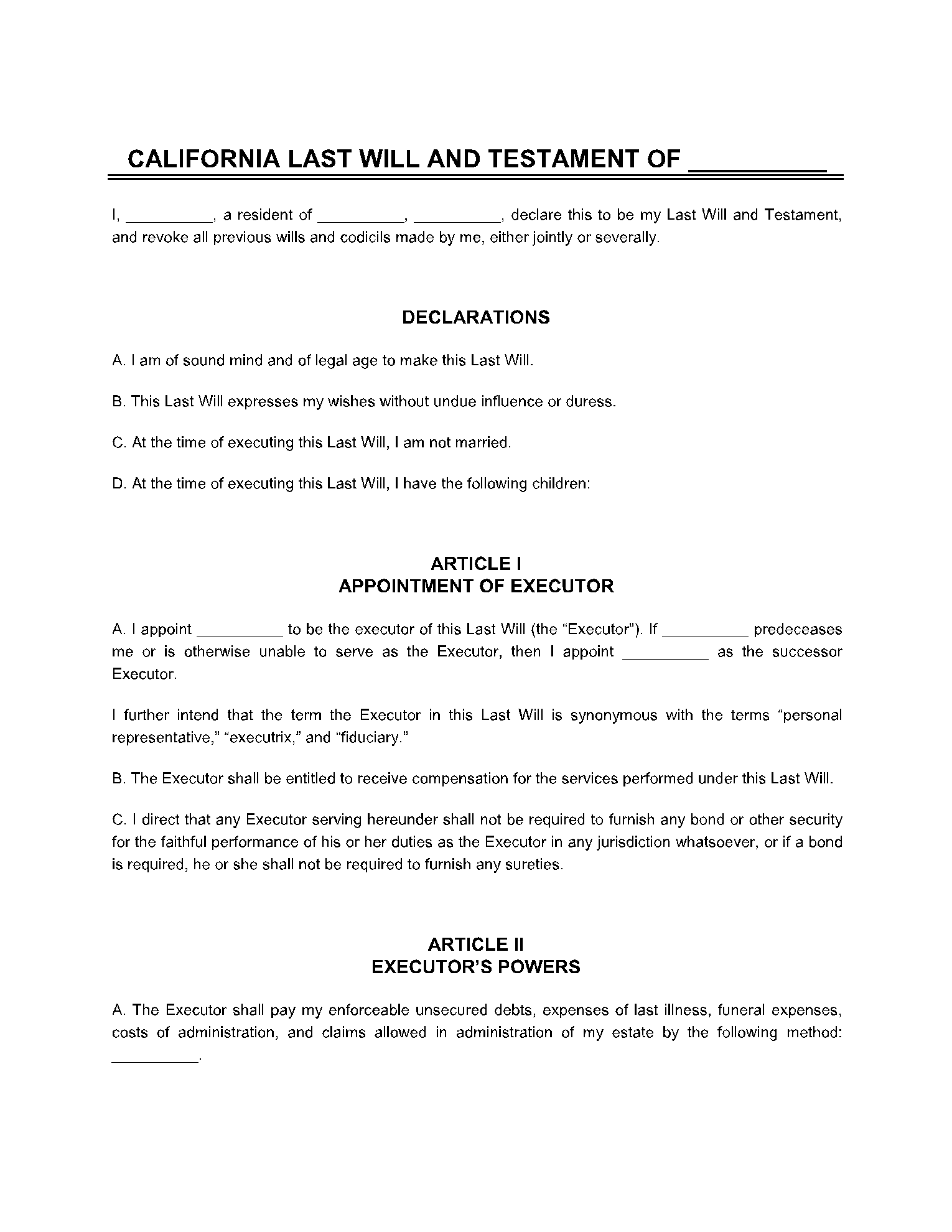If you are a parent, you must have always thought about who will take care of your children after you pass away. If you want someone to guardian your children, it is important that you get a last will and testament. The will template is a provision that maps several situations after an individual's passing away, such as redistribution of wealth, guardianship of children, etc.
What Is a Last Will and Testament?
The last will and testament template is a legal document that outlines how a person’s properties and assets will be distributed after their passing away. The last will and testament form is sometimes also referred to as "Last Will" or "Will." The will form is not just limited to assets or personal properties. There are different types of last will and testament, such as Arizona will form, California last will and testament, Colorado last will and testament document and other templates.
It can also be used to specify guardianship or custody information for the children of the person who has passed away. After the document has been signed, it is distributed among all the relevant people, i.e., the beneficiaries as well as the testator's attorney. The will specifies how to arrange the funeral after the person leaves money for its arrangement.
Typically, you have to be older than 18 years in order to make a legal will form. If you don’t have a last will when you die, your state's laws will determine who will stay in charge of your property and your children. If you want these decisions to be based upon your choice, you need to have a will and testament.
Who Needs a Last Will and Testament? And Why?
Anyone over the age of 18 should consider using the will form in order to clarify who gets hold of the properties and guardianship of your children. This is a good practice to follow, so there are not any potential disputes or misunderstandings after the departure of the individual. Following are some general cases in which a person should consider getting a last will and testament form:
- Accumulated Assets: If you have accumulated assets or tangible personal property, a simple will template will be crucial. Otherwise, your assets may be distributed according to the state’s laws and not according to your will.
- You are a Parent: If you are a parent or a grandparent, then you would need to create a last will and testament. This is to formally declare who gets guardianship of your children (or grandchildren) after you pass away.
- You are a Pet Owner: After you pass away, you would probably want your beloved pet to be taken care of by someone you trust. If not, the state may hold on to your pet.
- You Serve in the Military: If you serve in the military, you would want to make a will form for your loved ones in case anything was to happen to you.
What Are the Important Parts of a Last Will and Testament?
An affidavit form can vary from one another because of the laws that are different among the states. However, there are some crucial elements that should be mentioned in a last will and testament:
- Beneficiary: The beneficiary can be a single person or a group of individuals who are supposed to receive the property.
- Testator: The testator needs to be mentioned in the last will and testament. The testator is the individual whose property is going to be distributed after his passing away.
- Marital History and Children: This indicates whether you are married, widowed, or divorced and how many children you have – including adopted children and stepchildren.
- Debts and Taxes: The will form needs to mention the debts that are to be paid and how they should be paid.
- Assets: The redistribution of the assets as well as how you want your assets to be received need to be mentioned in the provision.
- Guardianship: It is important to mention who will become the guardian of your children or minor children after you pass away.
Conclusion
It is always a good step to plan your future in advance for your loved ones. This includes getting a last will and testament so that things can remain in order and there is no confusion about the redistribution of wealth.














